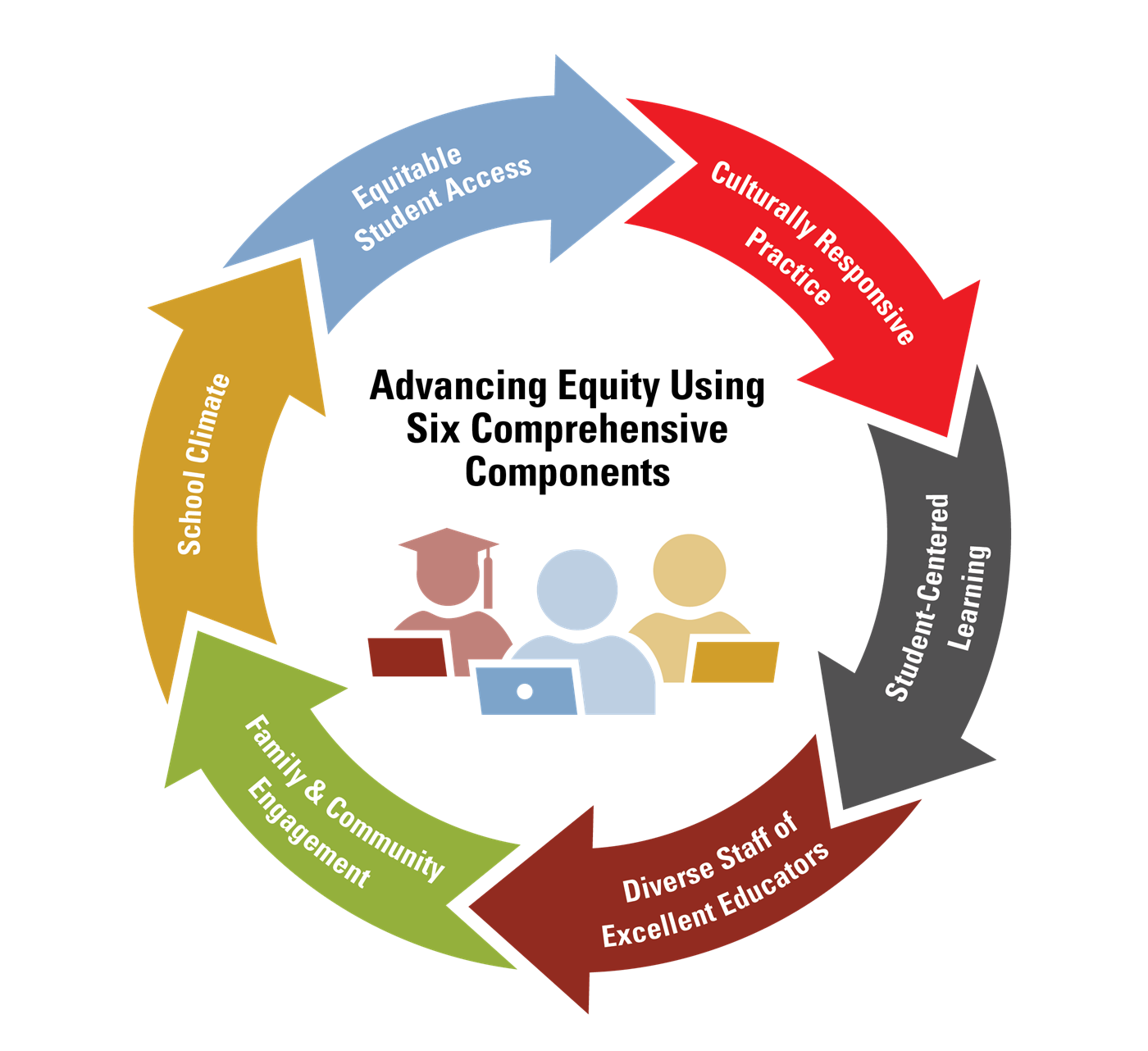Advancing Academic Excellence for All: Equity Gap Analysis Tool
The Ohio Department of Education and Workforce is committed to creating the learning conditions that ensure each child acquires the knowledge and skills needed to be successful. To reach this goal, equity in education must be a focal point. In an equitable education system each child has access to relevant and challenging academic experiences and educational resources necessary for success across race, gender, ethnicity, language, disability, family background, income and any other differentiating factors.
The Advancing Academic Excellence for All: Equity Gap Analysis Tool was developed in partnership with Westat, a research company who focuses on improving outcomes in health, education, social policy, and transportation. Westat has done extensive work around equity in education, including the publication of The Educator Equity Resource Tool: A Guide for America’s Schools. Local districts from around Ohio, including Akron City, Chillicothe City, Fairfield City and Hilliard City, contributed to the development process of this Gap Analysis Tool through focus groups and prototyping. Feedback from these districts helped refine the tool and make it accessible to all districts and schools throughout Ohio.
The Equity Gap Analysis Tool is designed to assist educators, individually or in groups, in assessing the state of equity at the school and district level. This equity gap analysis highlights six components of comprehensive educational equity (fiscal equity is embedded within each component):
In the tool, each equity component is addressed in one section. Each section begins with a concept framing statement to explain its purpose. Each section also includes a table that lists indicators that capture practices that reflect effective and successful implementation of a comprehensive approach to advance educational equity variety for the component.

Directions for Use
The Advancing Academic Excellence for All: Equity Gap Analysis Tool is designed to be completed by a stakeholder group that works through each component together to determine the degree to which the school or district has successfully addressed it. There are multiple options for completing the tool. Individuals can score each indicator on their own and then convene as a stakeholder group to compare findings, or the stakeholder group can convene and score the indicators together.
Completing the tool requires teams to gather evidence to determine the extent and quality of implementation. There is a list of possible evidence provided in each section for each component. The list is not all inclusive and can vary based on the local context and availability of data.
As a team works through each indicator, they should determine the degree to which the school or district has engaged in successfully implementing this equity work. There are five levels to indicate the quality of implementation:
- Best practice (BP) means there is significant evidence of successful implementation in this aspect of the equity work.
- Good practice (GP) means there is some evidence of successful implementation in this aspect of the equity work.
- Developing practice (DP) means there is little to no evidence of successful implementation (or in early implementation phase) in this aspect of the equity work.
- Not in Practice (NP) means nothing has been considered, developed, or implemented in this aspect of the equity work.
- Unaware (U) means there is no knowledge of this aspect of the equity work.
For best results, teams should complete the entire gap analysis. However, it is possible to focus in more depth on individual components that are of greater significance based on the local context and needs.
The tool can be completed on a paper version and manually score or using an Excel-based format that scores automatically.
RECOMMENDED IMPLEMENTATION STEPS TO COMPLETE ANALYSIS TOOL
- Designate one equity team member as the administrator for the gap analysis.
- Distribute the gap analysis to all members of the equity team and other leadership as appropriate.
- Determine if the team will complete it individually or as a group.
- Team members complete and return results to the administrator, which can be done on a hard copy or using the Excel Advancing Academic Excellence for All: Equity Gap Analysis Tool.
- Administrator compiles gap analysis results using the Excel Advancing Academic Excellence for All: Equity Gap Analysis Administrator Tool.
USING THE RESULTS
Once the comprehensive educational equity gap analysis tool has been completed and the results have been compiled on the Excel Advancing Academic Excellence for All: Equity Gap Analysis Tool, team members can identify areas of success and determine opportunities for continuous improvement. Upon reflection, it is encouraged that the team develop a plan with strategies and action steps to support the sustainability of successes and address the gaps to inform the implementation of the equity work within their district or school.
Last Modified: 4/2/2024 10:06:29 AM